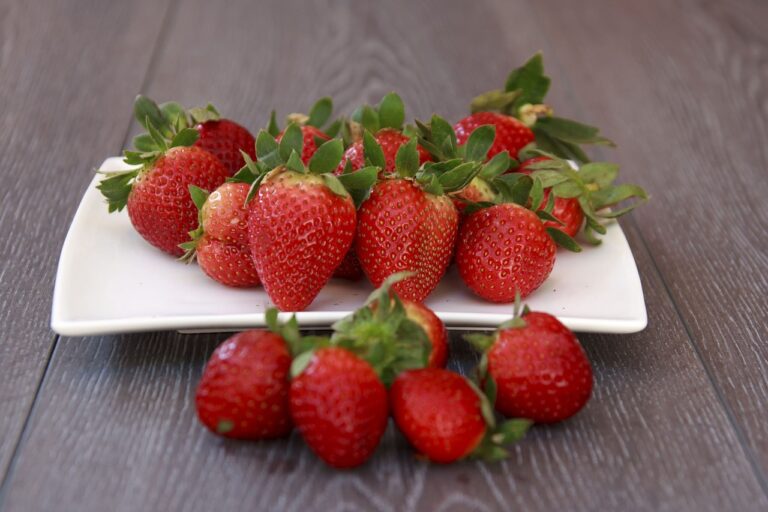The Importance of Diversity in Fashion
all panel 777, lesar247, 99 exch:The art of mixing textures in kitchen design: Wood, Metal, and Glass
When it comes to kitchen design, there are endless possibilities for creating a space that is not only functional but also visually appealing. One of the key elements to consider when designing a kitchen is the use of different textures. By incorporating a variety of textures such as wood, metal, and glass, you can add depth and interest to your kitchen design. In this article, we will explore the art of mixing textures in kitchen design and how you can use wood, metal, and glass to create a cohesive and stylish look.
Creating a cohesive design with different textures
When it comes to mixing textures in kitchen design, the key is to create a cohesive look that is both visually appealing and functional. By combining different textures such as wood, metal, and glass, you can create a kitchen that is warm, inviting, and stylish. Here are some tips for incorporating different textures into your kitchen design:
1. Start with a neutral base: When mixing textures in kitchen design, it’s important to start with a neutral base. Choose a neutral color palette for your walls, cabinets, and countertops so that your textures can take center stage.
2. Use wood for warmth: Wood is a versatile material that can add warmth and texture to your kitchen design. Incorporate wood elements such as cabinets, countertops, and flooring to create a cozy and inviting space.
3. Add metal accents for a modern touch: Metal is a great material for adding a touch of modernity to your kitchen design. Consider incorporating metal accents such as stainless steel appliances, hardware, or light fixtures to add a sleek and contemporary look to your space.
4. Include glass for light and transparency: Glass is a great material for adding light and transparency to your kitchen design. Consider using glass cabinets, backsplashes, or countertops to create a bright and airy feel in your kitchen.
5. Mix and match textures: Don’t be afraid to mix and match different textures in your kitchen design. Combining wood, metal, and glass can create a dynamic and visually interesting space that is both functional and stylish.
6. Balance textures: When mixing textures in kitchen design, it’s important to strike a balance between different materials. Consider using a mix of textures in different areas of your kitchen to create a harmonious and cohesive look.
7. Experiment with different combinations: The beauty of mixing textures in kitchen design is that the possibilities are endless. Experiment with different combinations of wood, metal, and glass to create a unique and personalized look that reflects your style and taste.
8. Consider the overall style of your kitchen: When mixing textures in kitchen design, it’s important to consider the overall style of your kitchen. Whether you have a traditional, modern, or eclectic kitchen, you can find ways to incorporate wood, metal, and glass into your design to enhance the overall aesthetic.
9. Don’t forget about lighting: Lighting plays a crucial role in highlighting different textures in your kitchen design. Consider using under cabinet lighting, pendant lights, or recessed lighting to showcase wood, metal, and glass elements in your kitchen.
10. Seek inspiration: If you’re feeling stuck or unsure about how to mix textures in your kitchen design, seek inspiration from interior design magazines, websites, or social media platforms. Look for kitchens that use wood, metal, and glass in creative ways to get ideas for your own space.
By following these tips and incorporating wood, metal, and glass into your kitchen design, you can create a space that is not only functional but also visually stunning. Mixing textures in kitchen design is an art form that requires creativity, experimentation, and a keen eye for detail. With the right balance of wood, metal, and glass, you can create a kitchen that is both beautiful and practical.
FAQs
Q: What are the benefits of mixing textures in kitchen design?
A: Mixing textures in kitchen design can add depth, interest, and personality to your space. By incorporating a variety of materials such as wood, metal, and glass, you can create a kitchen that is visually appealing and inviting.
Q: How can I mix textures in my kitchen design without overwhelming the space?
A: To mix textures in your kitchen design without overwhelming the space, start with a neutral base and incorporate textures in small doses. Balance different materials such as wood, metal, and glass to create a cohesive and harmonious look.
Q: Can I mix different styles of textures in my kitchen design?
A: Yes, you can mix different styles of textures in your kitchen design to create a unique and personalized look. Experiment with different combinations of wood, metal, and glass to find a mix that suits your style and taste.
Q: How can I incorporate lighting to highlight textures in my kitchen design?
A: To highlight textures in your kitchen design, consider using lighting to showcase wood, metal, and glass elements. Use under cabinet lighting, pendant lights, or recessed lighting to illuminate different textures and create a visually stunning space.
Q: Where can I find inspiration for mixing textures in my kitchen design?
A: You can find inspiration for mixing textures in your kitchen design from interior design magazines, websites, and social media platforms. Look for kitchens that use wood, metal, and glass in creative ways to get ideas for your own space.
Q: What are some common mistakes to avoid when mixing textures in kitchen design?
A: Some common mistakes to avoid when mixing textures in kitchen design include overdoing it with one material, neglecting lighting, and not considering the overall style of your kitchen. Be mindful of balance, harmony, and cohesion when incorporating wood, metal, and glass into your design.







